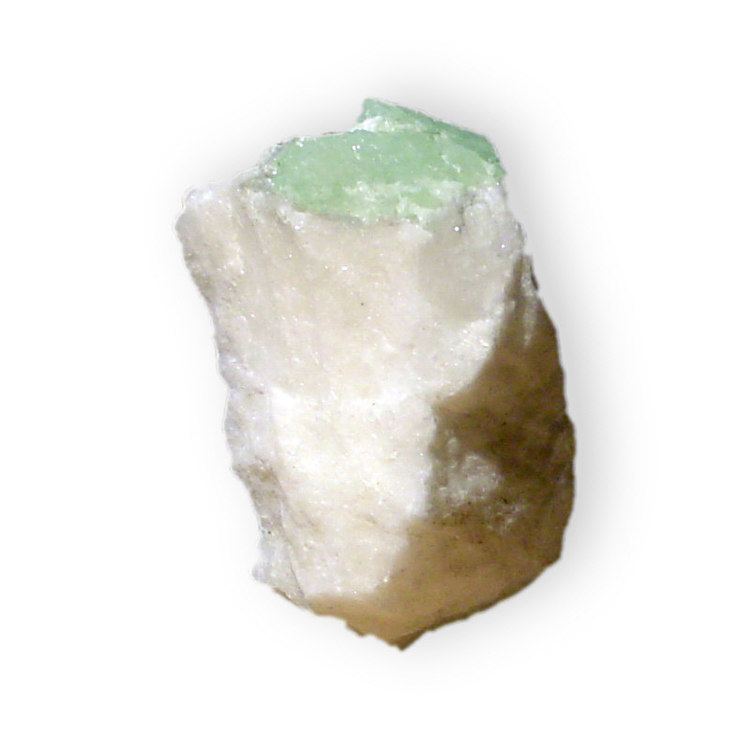Category Sulfate minerals Crystal system Hexagonal | Strunz classification 7.DG.15 Space group P63 | |
 | ||
Formula(repeating unit) Ca3Si(OH)6(CO3)(SO4)·12H2OCaSi(OH)6·CaCO3·CaSO4·12H2OCaSiO3·CaCO3·CaSO4·15H2O Crystal class Pyramidal (6)H-M symbol: (6) | ||
Thaumasite is a silicate mineral with chemical formula Ca3Si(OH)6(CO3)(SO4)·12H2O. It occurs as colorless to white prismatic hexagonal crystals, typically as acicular radiating groups. It also occurs as fibrous masses. Its Mohs hardness is 3.5 and it has a specific gravity of 1.88 to 1.90. Optically it is uniaxial negative with indices of refraction of nω = 1.507 and nε = 1.468.
It occurs as a hydrothermal alteration mineral in sulfide ore deposits and geothermal alteration of basalt and tuff. It occurs with zeolites, apophyllite, analcime, calcite, gypsum and pyrite.
Thaumasite can also be formed along with other calcium silicate hydrates (CSH) during cement alteration, especially when sulfate attack develops.
It was first described in 1878 in Sweden and named from the Greek, "thaumazein", to be surprised, in reference to its unusual composition with carbonate, sulfate and hydroxysilicate anions.
The silicate structure of thaumasite is unusual due to the presence of non-tetrahedral silicon in its crystal lattice. Indeed, an atypic octahedral configuration is observed for Si present in thaumasite in the form of hexahydroxysilicate: [Si(OH)6]2−, a species exhibiting a geometry similar to that of the hexafluorosilicate [SiF6]2−.
